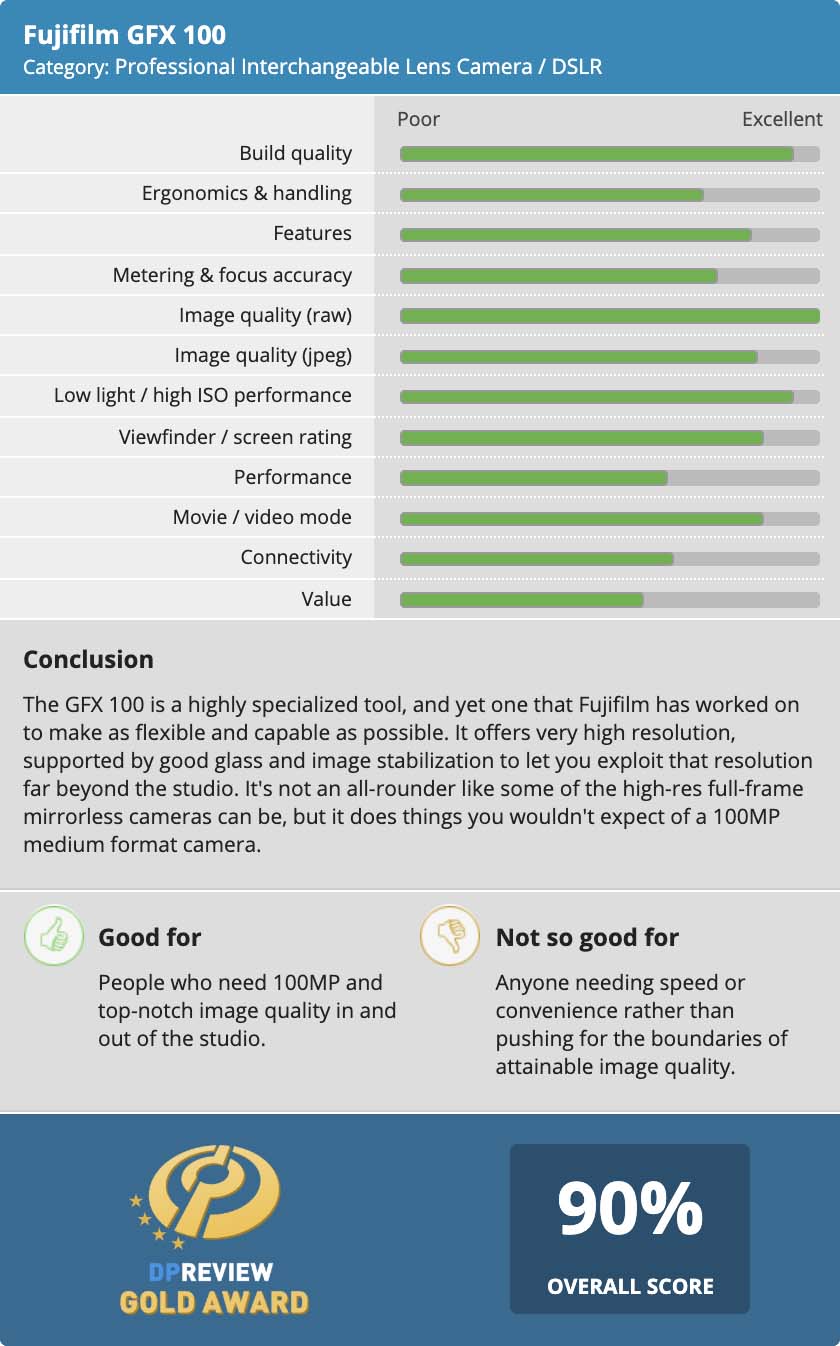
It’s not surprising, but the Fujifilm GFX100 took home the gold in DPReview’s review. You can read the full review here, but if you just want the high lights I have posted them below:
From the point of view of image quality alone, the GFX 100 is the best camera we’ve ever reviewed (though its larger sensor 150MP peers should out-perform it). The new BSI sensor and higher pixel count of the GFX 100 puts clear water between it and even the best smaller sensor cameras, and if you need the kind of detail that the GFX 100 offers, there’s no more affordable way to get it. On top of this, its in-body stabilization, autofocus performance and well-designed user interface make it significantly more flexible (and usable) than other medium format competitors.
DPReview editors also had lots of praise for the king of mirrorless cameras:
The Fujifilm GFX 100 is among the finest cameras I’ve ever used. It comes with absurdly good image quality and resolution, and yet, in most respects it responds like Fujifilm’s X-series APS-C cameras. Would I photograph an entire wedding with one? Because of its bulk and large file sizes, perhaps not. But could I photograph an entire wedding with one? Absolutely. And that is something I never thought I’d be able to say about a camera with a larger-than-full-frame sensor. – Carey Rose Reviews Editor
and
The GFX 100 is the first medium format camera I’ve ever used – film or digital – which doesn’t feel like a compromise. In almost all respects, the GFX 100 handles like a professional DSLR, but with all of the benefits of mirrorless, plus excellent 4K video capabilities and the unimpeachable image quality offered by a cutting-edge sensor. It’s not perfect, and it’s not cheap, but if I was a working professional photographer I’d buy a GFX 100 in a heartbeat. -Barney Britton Senior Editor
Finally, nothing quite compares to the GFX100 today and finally a major publication is saying it “the GFX 100 significantly outperforms full-frame camera“:
Having said that the GFX 100 significantly outperforms full frame cameras, we should still consider the Panasonic Lumix DC-S1R, since it’s able to shoot and combine multiple shots in order to offer resolution and light capture (and hence tonal quality) comparable to a larger sensor. But, while it does so in a smaller, lighter body and doesn’t have any phase detection elements to limit its usable dynamic range, its multi-shot mode only gets its best results when tripod-mounted, and applied to static subjects (and its use of electronic shutter limits its use with strobes). For most high-res applications, the GFX is the simpler, stronger, and yes, more expensive option.
| What we like | What we don’t |
|---|---|
|
|
Follow Fujiaddict on Facebook, Twitter, Instagram, and YouTube
Fujifilm GFX News, Rumors, and Collaboration
Fujifilm GFX Owners Group
Fujifilm GFX Page
